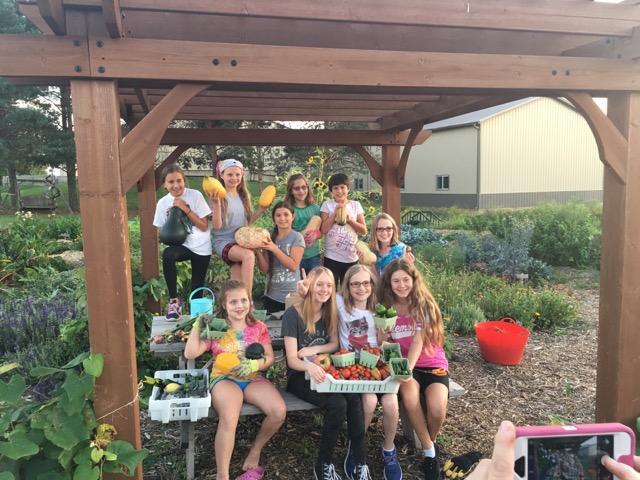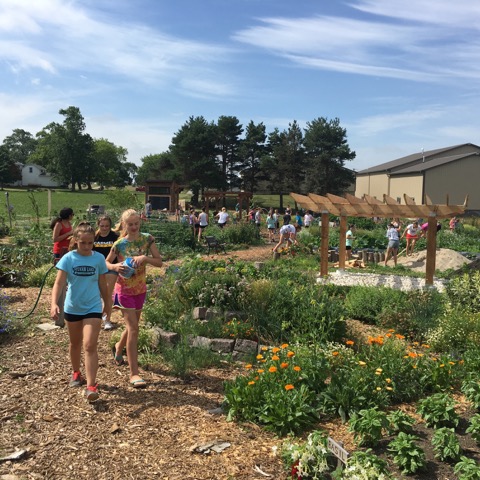Fremont Township Garden Offers Oasis of Biodiversity

Tucked away right off of Highway 60 in Mundelein is the Fremont Township Community Garden, an oasis of biodiversity that serves as an outdoor classroom for gardening, conservation education, and more. Back in 2014 when the garden was established, Garden Coordinator Alicia Dodd wanted to design a dynamic, multi-functional space that encouraged people to explore, learn, taste, rest, and play in the garden. Over the years, her vision has come to fruition as new components and layers of learning opportunities have been added to the garden.
“I love how alive this space can feel—the birds, butterflies, species of bees all flying around—it really creates a feeling that things are growing and that there is diversity here,” Dodd said.
The garden is located on the grounds of the Fremont Township Administrative Center, 22385 W. Route 60 in Mundelein. Food produced at the garden is provided to the Fremont Township Food Pantry and low-income seniors in the area. Most crops at the garden are labeled so that visitors can see what’s growing, but there are opportunities for learning layered throughout, including permaculture, native plants, a rain garden, hoop house, edible landscapes, bug hotels, and more.
One of Dodd’s visions for the garden was to provide a place where people can both see and learn about the importance of gardening with sustainable methods. The garden is maintained according to permaculture and bio-intensive gardening principles, which emphasize the garden’s inter-relatedness with every aspect of the local ecosystem and promote biodiversity.
“I hope this place is an inspiration for people,” she said. “I want to show them how we are connected to nature and how we’re interdependent. It makes me feel that my work is purposeful.”
Fremont Township provides some funding for the garden and Dodd has secured several grants as well to help implement new projects. However, most of the garden has been completed over the years with the help of volunteer power, and donated and repurposed materials. Visitors will find a masterfully planned garden with heirloom varieties of vegetables, fruit such as raspberries and blackberries, fruit trees, and flowers to encourage pollination.
Dodd also very intentionally included gathering spaces throughout the garden to encourage people to slow down and take in the beauty, diversity of insects, and plant life around them. There are shaded places for people to sit and relax, hammocks for kids to take breaks and even a cob house, which is an ancient building technique that uses sand, straw, water, and other natural materials. The garden’s cob house is the perfect place for kids to explore and for people to take refuge from the sun or rain.
Seeing people visit and use the space brings Dodd joy. Several school groups, sports teams, churches, and summer camps come each season to volunteer their time and learn.
“It makes me happy that there is a place where people can come work, taste, observe, and learn,” she said. “It really fulfills a need in the community. It’s inviting and beautiful and that’s important both for kids and adults.”
There are many ways to get involved in the garden: as a garden volunteer, community service projects, or simply to visit and enjoy the quiet and beauty of the garden. Visitors are welcome to come to the garden anytime, however, there are set workdays on Tuesday and Sunday mornings. Tuesdays are harvest days while Sunday tasks vary widely, but can include weeding, bug hunting, planting, and more depending on the time of season.
For more information about the garden, visit here. For updated information about the status of workdays and updates, join the garden’s Facebook group.



